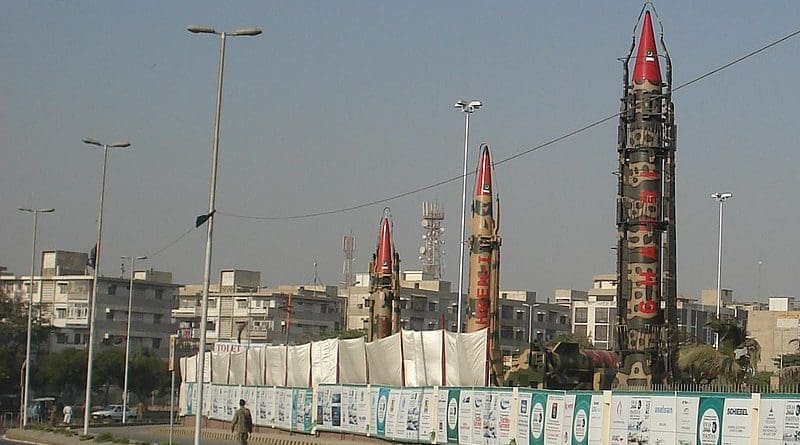Guiding Militarization Of Space Through International Cooperation – OpEd
In November, after the most recent Russian ASAT test, United Nation’s General Assembly, First Committee passed a resolution proposed by UK, which calls for the creation of a “new open-ended working group” to created norms, rules that created the standard operating procedures for the “military activities in the space”. Rationale behind the resolution proposed by the UK was that in recent years ASAT tests in lower orbit has created huge debris, which increases the probability of the collisions and destruction of satellites working in lower earth orbit. Moreover, the debris and ASAT tests are increasing the chances of miscalculation and uncertainty. Thus, it is necessary that the military activities in Space should be guided through the proper procedures. If the resolution get the final approval from the UN its mandate makes it necessary for it to present its final report in year 2023.
There are some international agreements which guide the weaponization in outer space but mostly this topic is not given enough importance in context of creating arms control measures for out space. The reason could be that it is actually the global powers that are pursuing the space weaponization and missile defense programs and it is detrimental for their national interests to pursue the international agreements that could cap kinetic and non-kinetic anti-satellite weapons and their usage in space. In the name of stopping weaponization in Space one active treaty is the “Outer Space Treaty” of 1967 which prohibits the placement of nuclear weapons in space, but does not talk about the other weapons and their placement in space. Many states realize this issue as a result UNGA’s Special Session on Disarmament in its final document “orders to prevent an arms race in space”. However, no progress was made on the treaty because of the cold shoulder from the US.
Other than this China and Russia have pursued the treaty of “Prevention of Placement of Weapons in Outer Space”. In 2014 both countries presented this treaty at the forum of Conference on Disarmament (CD). The purpose of this treaty was also to fill the gaps left by the Outer Space Treaty and will prohibit not only the placement of weapons in Outer Space but also bans the ASATs from earth. However, this proposal by the China and Russia was discussed from the platform of CD and newly approved resolution approved by the UNGA’s first committed is coming from the platform of UN. It is also important to mention here that UNGA’s first committee deals and work with Conference on Disarmament and UNDC (United Nations Disarmament Commission) on the issues of peace, stability, disarmament, threats and challenges to peace globally and through what measures these issues can be resolved.
Space is a “common good” where every state reserves the right to use it peacefully; many states are utilizing this right and operating their satellites in the space. If one go by the statistics it can be said that the 1,950 satellites are operated in outer space by nearly 50 states, and all of these satellites are not military satellites, almost 145 satellites are of purely civilian nature and 276 are of mixed nature. Space is already filled many obstacles and creation of debris in outer space is making it more and more difficult for states to operate their satellites peacefully. Most of the emerging issues in outer space are man-made and required non-discriminatory, collaborative international mechanism to guide the actions of militaries in space.
Pakistan is a developing country with very limited resources and is also pursuing very modest space program. However, as a nuclear power and active member of the CD, it is imperative that Pakistan must work to attain the ban on ASATs at international level. Due to its geography and history its conflict with India and miscalculations and uncertainties attached to it could increase many folds if the situation of space weaponization goes on like this. India has already in 2019 tested a Kinetic ASAT test, on which Pakistan expressed grave concern. With technological innovations and emerging technologies in weapons it is becoming imperative that states must formulate some sort of arms control measures internationally and regionally because these technologies are blurring the lines between peace and conflict.
*Ahyousha Khan, Research Associate, Strategic Vision Institute, Islamabad.

